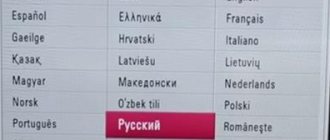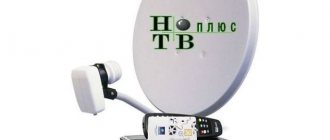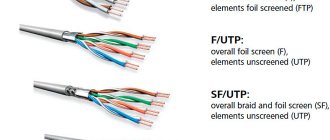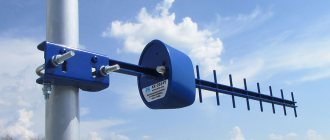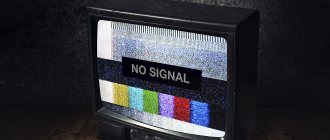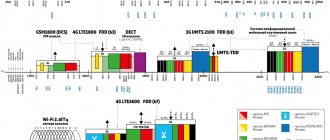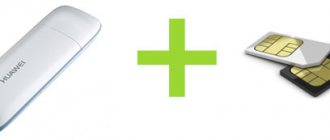Functioning of 4G connection
A connection in this format makes it possible to significantly improve the image quality on the display of a PC, smartphone and similar devices. This is important for Internet users in places where there is no cable connection.
Setting up a 3G antenna together with a 4G LTE device often provides insufficient mobile Internet speed due to the presence of a large number of users simultaneously on the BS (wireless) network. This is also affected by the distance from the consumer to the transmission tower, the difficult-to-reach position of the 4g or 3g modem.
G standards
In order to avoid difficulties with Internet reception, purchase or make your own receiving device. The panel antenna enhances signal reception when it is not possible to configure a 3g modem due to obstacles in the signal path or strong shielding of the external fences of the room.
The parabolic reflector allows you to catch BS waves at a distance of 8 km from the edge of the repeater coverage area. It should be taken into account that tuning 4g and 3g antennas to the base station is performed using a special technique. The slightest violation of the instructions leads to a deterioration in signal reception.
An antenna made using MIMO technology allows several subscribers to connect to it at once. The device has 2 or more antennas built-in. Users receive base station signals independently of each other.
4GMIMO antenna panel
Important! The letter combination LTE is added to the abbreviation of the communication standard. 4G LTE is a standard for wireless high-speed data transmission for mobile Internet receivers. LTE is designed to naturally upgrade GSM/UMT and CDMA2000 networks.
Installation and instructions for using the Network Cell Info application
Download the “Network Cell Info Lite” application from the Play Market - this is a free version that has advertising and some restrictions. You can use it, just like the paid one, if you pay 120 rubles for the “toad strangling”, the accuracy of measurements is no different from the more complete version. In the paid version, for example, you will be able to see the signal parameters not only of the current cell, but also of the neighboring one. This will give you the opportunity to try tuning the antenna to a different cellular base station. All the differences between paid and free can be found in the application itself.
Detailed instructions for using the application can be found here. If the program does not work correctly with your smartphone, important recommendations are available here. A detailed description and instructions can be found on the developer’s website
In the sensors section we will be interested in the following parameters:
Band
– frequency band number
Cellular operators in Russia provide access to 4G networks using several frequencies. There are five such “bends” in total:
- 3 in the 1800 MHz FDD band
- 7 in the 2600 MHz FDD band
- 20 in the 800 MHz FDD band
- 31 in the 450 MHz FDD band
- 38 in the 2600 MHz TDD band
Having understood the bend number, we can now correctly select an antenna that supports a particular frequency.
Here you can see information on frequencies and operators in each region of Russia: https://4pda.ru/forum/index.php?showtopic=820777
Fc is actually the frequency at which the cell operates.
RSRP
– level of received signal from a base station or cell, analogous to RSCP in 3G. If the level is less than -120 dBm, then this is bad. But this is a minimum, and in principle it is considered that the signal is “good” if it is more than about -90 dBm, that is, 30 dB more. In the first three top pictures you can see scales similar to car speedometers: in the center there is the RSRP value in numbers, the same information is duplicated by an arrow on an “arc” scale, the color of which changes from white to green. The white and red zones mean that everything is bad and there is either no signal or it is extremely weak, the yellow zone shows average or weakly average indicators, the green zone shows good or excellent.
RSRQ
(Reference Signal Received Quality) - characteristic of the quality of received pilot signals. The smaller this parameter is in absolute value, the better the signal. If it is more than -5 excellent, average -15 to -20
RSSNR
(Reference Signal Signal To Noise Ratio) signal-to-noise ratio. The less the worse. Good indicators are more than 10 and above.
EARFCN
— absolute radio frequency channel number, which actually also shows the frequency range on which the cell operates. Needed if we have not previously detected Fc or Band. Knowing EARFCN, you can calculate the Fc frequency using a calculator.
Thus, first we select the antenna by frequency. It is better if the antenna supports not just one band, but several, including 3G. Then, based on the level of the received signal, we select it by gain: if everything is bad and RSRP is approaching 120 or less, we take the maximum (usually 22 dB antennas), if the signal level is normal, you can try to choose a cheaper LTE antenna with smaller dimensions and gain 18 or 15 dB.
To achieve maximum data transfer speeds, you should consider purchasing a more expensive antenna that supports MIMO. Such an antenna receives and transmits signals simultaneously in horizontal and vertical polarizations or planes. In simple terms, it resembles a two-way road. This will not double the speed, but will provide up to a 50% increase in speed. And just as important: the signal received by the MIMO antenna will be more stable.
The higher the better
Setting up an MTS satellite dish
Install an external antenna for 4g as high as possible above ground level. This is done for three reasons:
- Tall grass and tree foliage absorb electromagnetic waves quite actively. Because of this, significant attenuation of the mobile signal may occur.
- The roof coverings of surrounding houses are good reflectors. As a result, the signal power drops significantly, as part of it goes to the side.
- A significant factor in signal attenuation is the large distance between the receiver and the transmitter.
The height of the installed antenna eliminates absorbing and reflecting obstacles in the signal path. Also, by raising the receiving device, you can significantly reduce the gap between the antenna and the transmitter tower.
Parameters for third generation networks
You can determine the signal quality level taking into account the following parameters:
- Uarfcn. This parameter may be displayed as RX. Thus, they designate the channel through which a specific frequency is found.
- EcIo. Shows the signal to noise ratio. The higher this value is, the better for the user. In the case when the network is free, there are minimal loads on it and they are easy to measure - the parameter will be closer to zero. Network capacity will decrease when there are more users. CINR is the same indicator, but only for fourth generation networks.
- RSCP – you can find out this parameter in any modern program. This indicator shows the power that the gadget receives when connected to the base station. Please note: the higher the value, the worse it is. A value of seventy and below will be considered the norm.
3G/4G antenna directions
For setup, it is important to choose the correct direction of the horizontal axis of the 4G antenna. Sometimes home craftsmen try to establish mobile Internet by pointing the antenna at the nearest tower. At the same time, they do not take into account the fact that the equipment on a certain mast may be intended for servicing mobile phones. Also, towers are at the disposal of different 3G/4G communication operators. Therefore, the receiver is oriented based on measurements of the signal level of its operator.
Antenna kit for USB 4G modem
Antenna power supply
Proceed as follows:
- the antenna is raised to the highest point of the house;
- They take a modem and a laptop with them, they are connected by cables into a single circuit: antenna + modem + laptop;
- programs for measuring the 3G/4G signal level and data transfer speed are first loaded into the computer;
- fixing the antenna after each rotation at an angle of 10-15 degrees, find the position of the receiver with the maximum parameter;
- if there are several such successful orientations, then choose the rotation angle at which the Internet speed will be highest.
The above recommendations are the right way to install the antenna correctly. Universal modems have additional settings: RSRQ, RSRP, SINR, which allow you to more accurately configure the antenna.
Note! If a mobile PC is not available, a desktop computer is used. This will require a partner who will monitor the signal level on the display. Communication between adjusters is carried out via cellular communication.
What SINR RSRP Yota signal should be
Below we will look at the parameters for the Iota 4G (LTE) Internet. Signal quality (SINR/RSRP parameter) is 12 dB. This is the average power value. In simple terms, we are talking about the absolute level of the transmitter signal from the base station. The SINR RSRP signal is usually measured in dBm. If the value of this parameter is -120 dBm or less, then the LTE signal will not be stable and strong. SINR indicates the ratio of signals to noise in a receiving channel. If its value is zero dB, then the signal level is equal to the noise level. And if the value is positive, then the signal is higher than the noise. If the indicator is negative, it means the signal is lower than the noise. In such a situation, the device will still receive signals, but the reception quality will be poor. It should be understood that in urban conditions, where there is a large number of various types of interference, the SINR parameter is much more important than RSRP.
For normal and even ideal reception, the values should be as follows:
- If the SINR is more than twenty, this is ideal. But achieving such a level is unrealistic.
- From zero to 12 is a satisfactory level.
- Less than zero - the connection is very bad, it is impossible to use the Internet.
- RSRP -75 or less is excellent audibility; it is also impossible to achieve this parameter.
- RSRP -90 to -95 is average.
- RSRP of -95 or more is low quality.
Operator testing
TV antenna signal amplifier
When choosing an operator, you always choose the mobile Internet provider that has the highest signal transmission speed.
There is no point in relying on unfounded statements on the Internet about some advantage of a particular mobile operator. It is quite possible to test them in the access zone yourself. To do this, you need to have a universal firmware modem and SIM cards from different operators. You can borrow a modem and cards from friends and acquaintances.
Testing will take no more than 40 minutes. They do it like this:
- The antenna is rotated 3600.
- Rotating the reflector by 10-150 each time, SIM cards are inserted into the modem one by one.
- During the testing process, each measurement of the data transfer rate is recorded.
- They stop at the fastest option.
Switching
The actual connection of the external antenna to the 4G modem has already been completed in full. Now you need to remove the special tray in the latter and install the SIM card into it. Next we install it back.
At the next stage, remove the protective cap and free the USB port. Then the latter is installed in a free slot on a personal computer. Now we connect the external antenna to the CRC9 sockets. Moreover, a conventional device of this type is connected by one wire, but if MIMO technology is supported, two cables are used. Accordingly, in the first case you need one CRC9 format connector, and in the second - two such sockets.
Checking the speed limit on the modem
Before setting up the antenna, you need to make sure that the characteristics of the modem match the received 3G/4G signal. The fact is that progress in improving network equipment is developing exponentially. A 3G modem manufactured several years ago may turn out to be an outdated model that will not perform the required functions.
You can check the possibilities of receiving high-speed Internet with your modem online. If the characteristics of the device do not correspond to the transfer speed of 20 Mbit/s, then you will have to abandon it and purchase a new 3G/4G model.
When in doubt about the speed of network signal transmission, contact the technical support of your operator. You need to make sure that there is no unauthorized reduction in the speed limit.
Modem 4GLTE
Purpose
It is most optimal to purchase a 4G modem with a connector for an external antenna in the case when you need to create a stable connection to the Internet at a considerable distance from the base station of a cellular operator. That is, the distance can be from 5 to 15 km. If the distance is shorter, then the internal antenna integrated into the modem can provide a stable connection at an acceptable speed. But beyond 5 km, the use of an external antenna is really justified.
Therefore, such systems are recommended for use in the suburbs of large populated areas where there is high-quality 4G/LTE or 3G/UMTS coverage and there is no possibility of creating wired switching to the Global Wide Web. At the same time, the first of them does not have such a signal and there are no plans to implement such cellular networks in the foreseeable future.
Installing a 3G/4G antenna
There are three options for installing an Internet antenna:
- roof mast;
- house wall;
- separate tower.
Roof mast
The stand is made from a metal pipe, pre-treated with an anti-corrosion compound or paint for external use. The antenna is mounted so that its windage does not become a threat of demolition in strong winds. The cable is wrapped around the tube, securing it through 200-300 mm with plastic clamps.
House wall
The support bracket is attached to concrete and brick with dowels using a hammer drill. On a wooden wall, the support is screwed with screws or secured with through studs.
Separate tower
It is convenient to install a separate tower on a personal plot. The mast is secured with three or four cable braces. Depending on the need, the tower can reach a height of 20 meters.
Additional Information. Highly protruding metal supports pose a risk of being struck by lightning. Therefore, all these structures must be equipped with grounding and lightning rods.
Setting up the computer system shell
Next, in order for the external antenna for a 4G modem - Megafon or any other operator - to function normally, it is necessary to make changes to the software shell of a personal computer or laptop. After turning on the computer and finishing loading it, you must wait until the installation wizard starts. Then you need to install the drivers and control program. The next important step is to reboot the PC, which is performed to ensure that all changes made in the previous stage in the software environment take effect. The next step is to adjust the antenna position.
Getting the signal level through the browser
If the modem interface displays the signal level, then to determine its value proceed as follows:
- the modem is connected to a PC or laptop;
- if the modem is located remotely, then communication can be established through a router;
- open the Chrome browser or Internet Explorer;
- enter the code 192.168.8.1 into the address bar;
- open the “Device Information” page;
- After the update, the signal level begins to be displayed in the Web interface after a few seconds.
What might you need?
Now let's look at the list of components that will be needed when creating such an access point. It must include the following:
- 4G modem with external antenna. Again, the first one must be equipped with a special CRC9 connector. Moreover, in some cases there may be only one, and such a solution is recommended to be used at a distance of about 5-10 km in conjunction with one antenna, and in some cases there may be two. In this case, the distance should be 10-15 km. And the number of antennas will increase to two.
- A special cable with a length of no more than 10 m. In this case, it is necessary to take into account the recommendations of the technical documentation for the antenna. In one case, you need a wire with a characteristic impedance of 50 Ohms, and in the other - 75 Ohms.
- It is recommended to purchase a special bracket for installing the antenna. If there is already a prepared place, then there is no need to purchase this component additionally.
- Starter pack.
- A special MNDA program will help you search for the most correct antenna position.
- A fully configured personal computer or laptop. You cannot do without these components at the setup stage. In the future, they can be replaced with a router. To fully configure the latter, it will be enough to completely reboot it and it will be completely reconfigured.
Programs for smartphones and tablets on Android
On Android, programs are downloaded and updated on smartphones and tablets much faster than this is done through a website. Using the software, you can quickly and easily set up a 3G/4G antenna.
The programs are available for free on the website w3bsit3-dns.com or on the paid resource PlayMarket. They can be downloaded for Android 5 and Android from 6.0.1 to 4.1.2. To determine the signal level, perform the following steps:
- the program is downloaded to a phone or tablet;
- the modem is connected to a PC or laptop;
- if the receiving device is located away from the computer, use Wi-Fi connection via a router;
- after downloading the program, enable the “Connect” function on the interface;
- The display will show the signal level.
Installation and instructions for using the Network Cell Info application
Download the “Network Cell Info Lite” application from the Play Market - this is a free version that has advertising and some restrictions. You can use it, just like the paid one, if you pay 120 rubles for the “toad strangling”, the accuracy of measurements is no different from the more complete version. In the paid version, for example, you will be able to see the signal parameters not only of the current cell, but also of the neighboring one. This will give you the opportunity to try tuning the antenna to a different cellular base station. All the differences between paid and free can be found in the application itself.
Detailed instructions for using the application can be found here. If the program does not work correctly with your smartphone, important recommendations are available here. A detailed description and instructions can be found on the developer’s website
In the sensors section we will be interested in the following parameters:
Band
– frequency band number
Cellular operators in Russia provide access to 4G networks using several frequencies. There are five such “bends” in total:
- 3 in the 1800 MHz FDD band
- 7 in the 2600 MHz FDD band
- 20 in the 800 MHz FDD band
- 31 in the 450 MHz FDD band
- 38 in the 2600 MHz TDD band
Having understood the bend number, we can now correctly select an antenna that supports a particular frequency.
Here you can see information on frequencies and operators in each region of Russia: https://4pda.ru/forum/index.php?showtopic=820777
Fc is actually the frequency at which the cell operates.
RSRP
– level of received signal from a base station or cell, analogous to RSCP in 3G. If the level is less than -120 dBm, then this is bad. But this is a minimum, and in principle it is considered that the signal is “good” if it is more than about -90 dBm, that is, 30 dB more. In the first three top pictures you can see scales similar to car speedometers: in the center there is the RSRP value in numbers, the same information is duplicated by an arrow on an “arc” scale, the color of which changes from white to green. The white and red zones mean that everything is bad and there is either no signal or it is extremely weak, the yellow zone shows average or weakly average indicators, the green zone shows good or excellent.
RSRQ
(Reference Signal Received Quality) - characteristic of the quality of received pilot signals. The smaller this parameter is in absolute value, the better the signal. If it is more than -5 excellent, average -15 to -20
RSSNR
(Reference Signal Signal To Noise Ratio) signal-to-noise ratio. The less the worse. Good indicators are more than 10 and above.
EARFCN
— absolute radio frequency channel number, which actually also shows the frequency range on which the cell operates. Needed if we have not previously detected Fc or Band. Knowing EARFCN, you can calculate the Fc frequency using a calculator.
Thus, first we select the antenna by frequency. It is better if the antenna supports not just one band, but several, including 3G. Then, based on the level of the received signal, we select it by gain: if everything is bad and RSRP is approaching 120 or less, we take the maximum (usually 22 dB antennas), if the signal level is normal, you can try to choose a cheaper LTE antenna with smaller dimensions and gain 18 or 15 dB.
To achieve maximum data transfer speeds, you should consider purchasing a more expensive antenna that supports MIMO. Such an antenna receives and transmits signals simultaneously in horizontal and vertical polarizations or planes. In simple terms, it resembles a two-way road. This will not double the speed, but will provide up to a 50% increase in speed. And just as important: the signal received by the MIMO antenna will be more stable.
Computer programs
To check the 3G/4G signal level on your computer, you need to use the following applications:
- My Huawei Terminal;
- HLS;
- MDMA;
- WlanExprtUMTS.
Install a new program after removing the old 3G application. Then they find out the COM port number of the modem. It is found through START – Computer – Properties – Device Manager – COM port number. After that, by rotating the antenna, the best signal reception is achieved. Launch the program, enter the port number, and enable the “Connect” function. The monitor will display the network status and signal strength.
Each of the programs has its own disadvantages and advantages. The consumer chooses the most suitable option for him.
4G is the current Internet communication standard today. However, on the horizon of technological progress, the prospect of introducing a more powerful standard – 5G – has appeared. Its developers claim the speed of future signal transmission is 10 times faster - 10 Gbit/sec.
Component Selection
First, it should be noted that you need to choose the right 3G/4G modem with an external antenna. The first of them must support 2G/3G/4G communication standards. Also, a USIM format card with support for LTE technology must be installed in its slot. Another important point is the presence of one or two CRC9 connectors, with the help of which the modem device is connected to an external antenna. In addition, you need to pay attention to the software shell of the latter. In some cases, the software allows working only with the equipment of one cellular operator, while in others, the equipment is universal and can function in combination with any cellular coverage.
At a distance to the tower of 5-10 km, you can use a single antenna, which is connected to a single CRC9 input. If the distance is 10-15 km, then you simply cannot do without an external MIMO antenna. The latter consists of two components. One of them functions in the horizontal plane, and the second in the vertical plane. In both the first and second cases, the operating frequency range should be limited to 800-2700 MHz.
In addition, it should be noted that the card format in the starter package must be USIM. If you use the usual format of the latter, there will be no support for 4G/LTE.
Video
Coffee capsules Nescafe Dolce Gusto Cappuccino, 8 servings (16 capsules)
435 ₽ More details
Coffee capsule Nescafe Dolce Gusto Cafe O Le Coffee with milk, 3 packs of 16 capsules each
1305 ₽ More details
Apple iPad tablets
Reviews
Most users indicate in their reviews that such mobile access points can often solve the problem of connecting to the Internet in the suburbs of large populated areas. In one case, you can use only one PC to obtain information, for example. But if you use routers with a 4G modem with an external antenna, you can create a small wireless network and distribute data using WiFi coverage. The only drawback is the higher costs compared to wired switching to the Internet. But if there is no worthy alternative, then the choice is precisely this access point.
Other homemade antenna options
Ideas for homemade antennas could be the following:
- Colander 4G. Everyone has a simple aluminum colander in their home. You need to fix the USB extension cord on the handle of the cookware. Connect a modem to it - it should ultimately be within the circle of the bowl. We direct the colander to the base station and catch the signal.
- 3G/4G satellite dish. If you have an old satellite dish, use it. The signal will be amplified significantly, since the antenna will be outdoor. Remove the converter from the boom. Secure the modem at this location. Naturally, you will need a USB extension cable - carefully stretch it to the modem and connect it. Now point the dish at the operator tower. To adjust, you will need to rotate the plate slowly to achieve maximum effect.
- Antenna "Double Ring". The method is similar to the Kharchenko antenna. It is just as effective, but here you also have to work hard to make the antenna.

